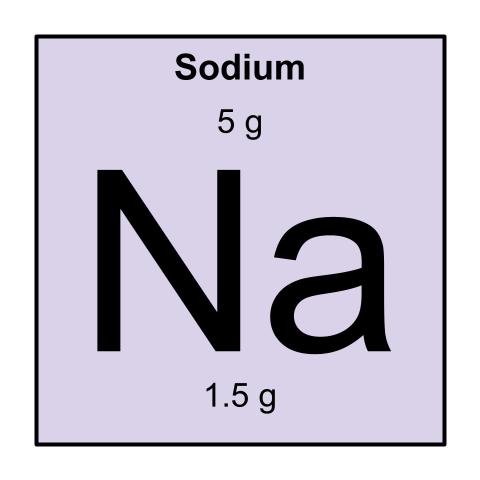Sodium is mostly located in blood and the fluid around cells. It helps control blood volume and volume of other fluid around cells. It is an electrolyte, so carries electrical charge in the body, which is needed for neuron signal transmission and muscle contraction. It is found in salt.
Quick Facts
-Mostly located in blood and the fluid around cells. Helps control blood volume and volume of other fluid around cells.
-An electrolyte, so carries electrical charge in the body, which is needed for neuron signal transmission and muscle contraction [72]
RDI
1.5 g
[128]
Conventional sources say 2300 mg / day [73] for the average person, and other sources say up to 3700 mg / day [74] is healthy.
Deficiency
-Symptoms include nausea and vomiting, headache, confusion, fatigue, restlessness and irritability, muscle weakness spasms or cramps, seizures, and coma
-Can be caused by excessive water consumption and underlying medical conditions
-Lower sodium levels are associated with cognitive decline [192].
Toxicity
-May not have symptoms unless very high levels, but symptoms include dizziness when moving or standing up, severe sweating or fever, vomiting and diarrhea [193]
-Salt intake doesn’t appear to show a correlation to disease unless more than 5 grams per day is eaten (2.5 tsp) [194]
Sources
Table salt (sodium chloride)


